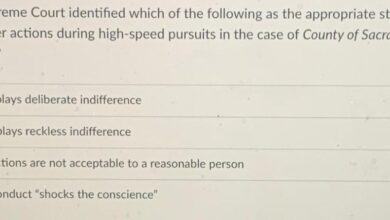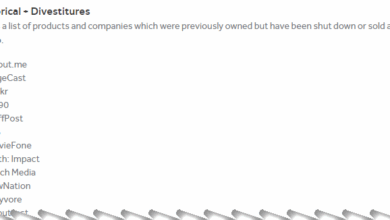Can Bad Spam Fighting Ideas Harm More Than Help?
Can bad spam fighting ideas harm more than help? This exploration dives into the surprisingly complex world of spam, revealing how seemingly effective strategies can actually backfire. We’ll examine harmful tactics, inadequate reporting mechanisms, and the unintended consequences of automated systems, all impacting user experience and online communication. We’ll also look at how a lack of user education plays a significant role in the spam problem.
From overly aggressive filters to confusing reporting systems, we’ll uncover the potential pitfalls of various approaches to spam prevention. This is more than just technicalities; it’s about understanding how these strategies can negatively affect legitimate users and the overall online ecosystem. Let’s see if we can find better ways to combat spam without causing more problems.
Harmful Spam Fighting Tactics

Spam filters are crucial for maintaining a clean and safe online environment, but poorly designed or overly aggressive filters can cause more harm than good. Misjudging what constitutes spam can lead to legitimate content being blocked, frustrating users and hindering legitimate communication channels. This article examines various harmful spam-fighting tactics and their negative consequences.Overly broad spam filters, designed to catch a wide range of potential spam, often suffer from a high rate of false positives.
This means legitimate emails, messages, or website content can be mistakenly flagged as spam, resulting in important communications being blocked or filtered away.
Ineffective Spam-Fighting Strategies
Spam filters are often complex and their effectiveness depends on many factors. A simple “one size fits all” approach frequently fails to accurately distinguish between genuine and malicious content.
- Blacklisting Based on Sender Reputation: While sender reputation lists can help identify spammers, they can also be inaccurate or outdated. This can lead to legitimate senders being blocked due to a temporary or false negative reputation.
- Filtering: Spam filters that rely heavily on s often struggle to adapt to evolving spam techniques. Spammers frequently change their wording, making filters less effective over time. Moreover, legitimate content might contain similar s, leading to legitimate messages being filtered as spam.
- Aggressive Content Blocking: Filters that aggressively block large swaths of content, such as those with specific words or phrases, can hinder legitimate communication. This is particularly problematic in online forums, social media groups, or email threads discussing controversial or sensitive topics.
Negative Consequences of Aggressive Spam Filters
Aggressive spam filters can lead to significant issues for both individuals and the online community.
- Blocking of Important Information: Legitimate emails from businesses, government agencies, or friends and family can get trapped in spam folders, potentially resulting in missed important notices or updates.
- Disruption of Communication Channels: Overly broad spam filters can disrupt legitimate communication channels, such as online forums or discussion boards, making it difficult for users to share information or participate in conversations.
- Damage to User Trust: When legitimate content is incorrectly flagged as spam, it can damage user trust in the system and potentially lead to users migrating to alternative platforms that lack robust spam filters.
Examples of Incorrect Flagging
Mistaken identification of legitimate content as spam can have serious consequences.
- News Articles and Research Papers: Academic articles, news reports, and research papers might be flagged as spam due to specific terminology or phrasing that resembles spam patterns. This can severely impede the dissemination of important information.
- Promotional Emails: Promotional emails from reputable businesses might get filtered into spam folders, losing potential customers or subscribers for legitimate companies. This is especially common for companies that use newsletters or promotional materials.
- Verification Codes and Important Alerts: Verification codes, important security alerts, and account recovery emails might be wrongly classified as spam, potentially causing significant issues for users.
Comparison of Spam-Fighting Methods
Different spam-fighting approaches vary in their effectiveness and potential harm.
| Method | Effectiveness | Potential Harm |
|---|---|---|
| Filtering | Low | High (false positives) |
| Sender Reputation Lists | Moderate | Moderate (inaccurate data) |
| Machine Learning Models | High (with proper training data) | Moderate (potential bias) |
| Hybrid Systems | High (combining various techniques) | Moderate (complexity) |
Inadequate Spam Reporting Mechanisms
Spam, unfortunately, remains a persistent issue across various online platforms. Effective spam fighting relies heavily on robust reporting mechanisms. Current systems often fall short, leading to frustration for users and hindering the ability to effectively combat spammers. This section delves into the shortcomings of existing methods and proposes solutions for a more efficient and user-friendly reporting process.Existing spam reporting systems frequently struggle to accurately distinguish between legitimate and spam messages.
This ambiguity can stem from a lack of clarity in the reporting process, leading to either missed spam or the reporting of legitimate content. The effectiveness of a spam reporting system hinges on user participation. A user-friendly and intuitive interface is paramount to encourage widespread reporting.
Problems with Existing Spam Reporting Methods
Existing spam reporting systems often suffer from several critical shortcomings. Users may encounter issues with the reporting process, leading to frustration and potentially abandoning the reporting process altogether. A lack of detailed feedback or clear guidelines can make the reporting process confusing and ineffective.
- Insufficient Reporting Options: Many current systems offer limited options for reporting spam. Users might be forced to select a generic category, leading to inaccurate or misdirected reports. This lack of granularity can result in spammers exploiting loopholes and avoiding detection.
- Complex Reporting Procedures: Some systems require users to navigate through multiple steps or provide excessive information. This complexity can discourage users from reporting spam, particularly those who are less tech-savvy or those dealing with frequent spam incidents.
- Lack of Feedback Mechanisms: Users often receive little or no feedback on whether their report has been processed or acted upon. This lack of transparency creates uncertainty and a sense of helplessness regarding the effectiveness of their reports.
- Inconsistent Handling of Reports: Different platforms may handle reports in disparate ways, creating a lack of standardization and hindering effective spam filtering. Inconsistency makes it difficult to assess the overall effectiveness of the reporting system.
Designing an Effective Spam Reporting System
A robust spam reporting system should be designed with user experience in mind. A well-structured interface, clear instructions, and prompt feedback are crucial for encouraging widespread participation.
- Intuitive Interface: The reporting interface should be clear, concise, and easy to use. Users should be able to quickly and easily identify and report spam without difficulty. A simple visual representation of the spam content, for example, could assist in the process.
- Comprehensive Reporting Categories: The system should offer a range of specific categories for reporting spam, allowing users to categorize spam based on its characteristics. This will assist in the categorization and analysis of spam. Examples could include phishing attempts, malware, unwanted advertisements, or other specific types of spam.
- Detailed Reporting Fields: Providing fields for users to add context or details about the spam is vital. This extra information can be critical for spam filters to identify patterns and improve their accuracy in identifying spam.
- Automated Detection Integration: The system should integrate with automated detection systems. This can enhance the effectiveness of reports and speed up the process of identifying spam. It would also help to provide a more accurate categorization of the spam.
A Table of Reporting Methods, Can bad spam fighting ideas
| Reporting Method | Advantages | Disadvantages |
|---|---|---|
| Dropdown Menu | Simple, quick to use. | Limited options, potentially inaccurate categorization. |
| Free-Text Field | Allows for detailed descriptions, potentially more accurate categorization. | Can be time-consuming, prone to typos. |
| Multi-Category Selection | Allows for multiple types of spam to be reported. | Can be confusing if not clearly structured, could lead to multiple reports. |
Improving User Experience with Spam Reporting Tools
A user-friendly spam reporting system will encourage widespread reporting. This is vital for maintaining a safe and clean online environment.
Unintentional Spam Generation

Accidental spam generation is a significant issue, often stemming from user actions misinterpreted by automated filters. This can lead to legitimate users facing account restrictions or being blocked from services. Understanding the common causes and how to differentiate between spam and legitimate activity is crucial for maintaining a positive online experience.Many users unknowingly trigger spam filters due to various factors.
These range from automated processes to simple, everyday online interactions. By recognizing these patterns and understanding how filters operate, users can significantly reduce the likelihood of being flagged as spammers.
Common Causes of Unintentional Spam
Misunderstandings about forum etiquette, improper use of mailing lists, and the nature of automated processes can lead to unintended spam generation. Users sometimes unknowingly violate rules that are designed to prevent spam.
User Actions Misconstrued as Spam
Certain user actions, while legitimate, can be mistakenly interpreted as spam by automated filters. These actions frequently involve sending large volumes of messages or posting numerous identical messages. For example, mass private messages to a large number of contacts or posting the same comment across numerous forums can trigger spam filters.
Examples of Legitimate Actions Triggering Spam Filters
Many legitimate actions can trigger spam filters. For instance, sending a large number of emails to a mailing list, participating in online forums, or using social media tools for communication can result in messages or posts being filtered.
Sometimes, overly aggressive spam filters can inadvertently block legitimate communications, even in the realm of peer-to-peer file sharing. This can be a real problem, especially as we look towards the future of p2p file sharing networks the future of p2p file sharing networks. Thinking about how these networks might evolve, and how we can design better, more adaptable spam-fighting systems is crucial.
Ultimately, finding a balance between security and freedom of information is key to the success of any future file-sharing platform, and a challenge for any good spam-fighting design.
Avoiding Actions Leading to Spam Reports
Maintaining a mindful approach to online interaction is key to avoiding spam reports. It’s crucial to respect forum rules and guidelines when posting messages. Be aware of the limitations and etiquette of mailing lists and social media platforms.
Sometimes, seemingly clever spam-fighting tactics can actually backfire. For example, overly aggressive filters might inadvertently block legitimate emails, which is a big problem. Understanding the nuances of online threats, like identity theft, is crucial. Checking out resources like identity theft online debunking the myths can shed light on how to spot and avoid these traps.
Ultimately, effective spam protection relies on a balanced approach, not just blindly blocking everything.
Differentiating Spam from Legitimate User Activity
Understanding the context of user activity is essential for differentiating between spam and legitimate actions. Consider the frequency, volume, and nature of posts and messages. Inconsistent posting patterns or the use of identical content across multiple platforms might raise red flags.
Scenarios of Unintentional Spam Generation
Various scenarios can lead to unintentional spam generation. One common scenario involves a user who unintentionally sends mass emails or posts similar messages across multiple forums. Another involves users who participate in automated marketing campaigns or contests that trigger spam filters.
Table of User Actions and Potential Spam Flags
| User Action | Potential for Spam Flag | Explanation |
|---|---|---|
| Sending bulk emails to multiple recipients | High | Large quantities of emails sent to a large recipient list can be interpreted as spam. |
| Posting the same message across multiple forums | Medium | Repeating the same message in various forums may raise suspicion. |
| Using automated tools for social media posting | Medium | Automated tools might be interpreted as spam if used excessively or improperly. |
| Participating in automated marketing campaigns | Low to Medium | Depending on the campaign and the platform’s spam filter, participation might be flagged. |
| Participating in frequent online discussions | Low | Legitimate interaction with frequent posting is not considered spam. |
Over-reliance on Automated Systems
Automated spam filters have become ubiquitous, offering a seemingly simple solution to the problem of unwanted email. However, relying solely on these systems can lead to significant drawbacks, especially when legitimate content is misclassified as spam. This over-reliance often masks deeper issues within the filtering process, and it’s crucial to understand the limitations and potential pitfalls of fully automated systems.Automated spam filters, while effective in many cases, are not infallible.
They often rely on complex algorithms that analyze email headers, content, and sender information to identify spam. These algorithms are trained on vast datasets of known spam and legitimate emails, but this training data may not always be comprehensive or representative of all possible variations of spam or legitimate communication.
Limitations of Automated Systems
Automated systems often struggle with nuanced or context-dependent communications. For example, emails containing specific s or phrases might be flagged as spam, even if they are legitimate. Similarly, emails sent from new or unknown addresses are frequently flagged as spam, potentially hindering legitimate communication from new contacts or businesses. Furthermore, automated filters can struggle with emails containing complex formatting, images, or attachments, leading to misclassifications.
Potential for Misclassification
The potential for misclassifying legitimate content as spam is a significant concern. Legitimate newsletters, promotional materials, or even emails from legitimate businesses might be wrongly flagged. This can lead to important information being missed, customer dissatisfaction, and lost revenue for businesses. This can happen when the algorithms have not been adequately trained on diverse data sets, leading to biases in the filtering process.
Examples of Ineffective Identification
Numerous situations highlight the shortcomings of automated spam filters. Emails containing sensitive information, such as financial details or medical records, might be misclassified as spam due to unusual formatting or subject lines. Emails with complex subject lines, such as those with multiple nested s or obscure phrasing, might be incorrectly flagged. Furthermore, emails containing attachments, such as images or documents, might be flagged as spam, preventing users from accessing important information.
Comparison with Human Review
Human review processes offer a level of nuance and context that automated systems often lack. Humans can assess the sender, subject line, and content of an email within the broader context of the user’s relationship with the sender. This ability to consider context is crucial in accurately classifying emails, especially those with a high degree of personalization or complexity.
Sometimes, the most innovative spam-fighting strategies can backfire spectacularly. For example, while Intel’s recent updates to their Itanium 2 processors ( intel updates itanium 2 processors ) are impressive, they don’t necessarily address the root of the problem. Ultimately, effective spam filters need to be more than just reactive; they need a proactive, adaptable approach.
Human review can also adapt to new types of spam and evolving tactics.
Improving Accuracy of Automated Filters
To improve the accuracy of automated filters, ongoing updates to the training datasets are necessary. These updates should include diverse examples of legitimate and spam emails to ensure a more comprehensive understanding of the variations present. Furthermore, using a combination of machine learning algorithms and human oversight can significantly improve the accuracy of spam filtering.
Importance of Human Oversight
Human oversight is critical in maintaining the accuracy and effectiveness of spam filtering. Human review can identify false positives, correct misclassifications, and adapt to new types of spam and evolving tactics. A balance between automated systems and human review processes is essential to ensure a comprehensive and accurate approach to spam filtering.
Automated vs. Human-Based Spam Filtering
| Feature | Automated System | Human-Based Review |
|---|---|---|
| Accuracy | High, but prone to misclassifications | High, with contextual understanding |
| Speed | Fast | Slower |
| Cost | Lower | Higher |
| Scalability | High | Limited |
| Adaptability | Limited to training data | Adaptable to new types of spam |
| Contextual Understanding | Low | High |
Lack of User Education and Awareness
User education plays a crucial role in the fight against spam. A significant factor contributing to the prevalence of spam is a lack of awareness among users regarding common spam tactics. Users who lack the necessary knowledge to identify and avoid spam become easy targets for malicious actors. Effective user training is essential in equipping individuals with the tools to protect themselves from spam and its associated harms.User education is not a one-time event but a continuous process.
Users need to be regularly informed about the latest spam tactics and the best practices for avoiding them. This constant reinforcement helps users to stay vigilant and make informed decisions when interacting with potentially suspicious messages or websites. Ignorance of spam tactics empowers malicious actors, while proactive user training builds a robust defense against spam.
The Role of User Education in Preventing Spam
User education is paramount in combating spam. By providing users with the knowledge to recognize and avoid spam, the potential for malicious actors to exploit vulnerable users diminishes. This education empowers users to make informed decisions about the emails, websites, and other communications they encounter. This proactive approach strengthens the overall security posture of the internet.
Common Spam Tactics and User Recognition
Understanding common spam tactics is essential for users to recognize them. Users should be equipped with the knowledge to distinguish between legitimate and fraudulent communications. This proactive approach enables them to protect themselves from potential harm.
| Spam Tactics | User Recognition Techniques |
|---|---|
| Phishing Emails | Suspicious email addresses, requests for personal information, urgent tones, grammatical errors, and generic greetings. |
| Fake Websites | Suspicious URLs, poor design, and lack of security features (e.g., missing HTTPS). |
| Social Engineering | Manipulative language, exploiting trust, and pressure tactics. |
| Malicious Attachments | Unfamiliar or unexpected file types (e.g., .exe, .scr), and requests to open attachments from unknown senders. |
| Fake Ads | Overly enticing offers, suspicious websites, and aggressive advertising. |
Resources for Educating Users
Providing users with accessible resources for spam prevention is crucial. Comprehensive guides, educational videos, and interactive tools can empower individuals to recognize and avoid spam. These resources should be readily available and easily understandable.
- Government websites offering cybersecurity tips.
- Educational materials from reputable organizations focusing on internet safety.
- Interactive online training modules.
- Educational videos on YouTube.
- Spam awareness campaigns in social media.
Best Practices for User Education
Employing effective strategies for educating users about spam prevention is critical. These strategies should be engaging, accessible, and tailored to the specific needs and technical proficiency levels of the target audience.
- Use clear and concise language, avoiding technical jargon.
- Employ visual aids, such as infographics and videos, to enhance understanding.
- Offer interactive exercises and quizzes to reinforce learning.
- Update educational materials regularly to reflect evolving spam tactics.
- Use diverse platforms for reaching various user groups (e.g., social media, email newsletters, and educational websites).
Effective and Engaging User Education Materials
User education materials should be presented in an engaging and easily digestible format. Effective examples include interactive online courses, short animated videos, and social media campaigns. These methods help maintain user attention and facilitate better retention of information.
- Interactive online quizzes that reinforce learning about common spam tactics.
- Short animated videos explaining phishing scams in a simple and entertaining way.
- Social media campaigns with infographics and short videos that highlight various spam types.
- Use of real-world examples in educational materials.
Ultimate Conclusion: Can Bad Spam Fighting Ideas
In conclusion, tackling spam requires a nuanced approach. Simply relying on automated systems or overly aggressive filters can lead to a cascade of problems, harming both legitimate users and the online environment. Instead, we need to consider the potential negative consequences of each approach. User education and thoughtful design of reporting mechanisms are crucial elements for effective spam prevention.
By acknowledging the potential for harm in our anti-spam strategies, we can move towards more sustainable and user-friendly solutions.







